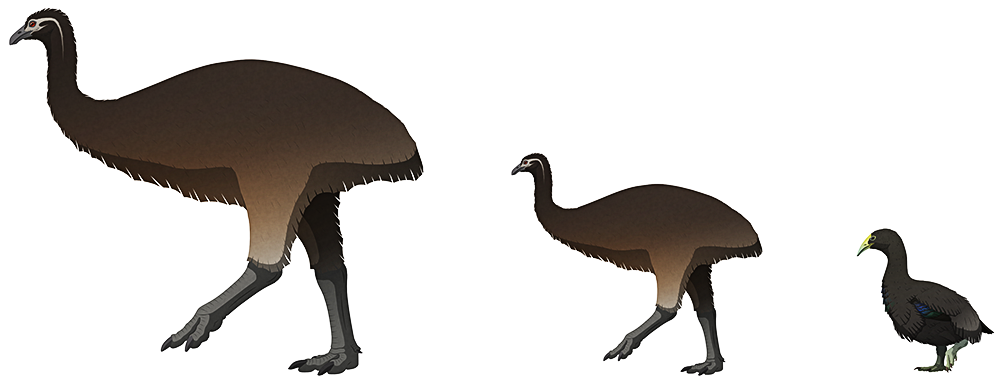With the lack of large terrestrial mammals in New Zealand, birds were free to exploit the “big herbivore” niches in the ecosystem — and the giant moa were the ultimate result.
Closely related to modern South American tinamous, the ancestors of moa were small flying birds that arrived in New Zealand sometime in the early Cenozoic. At the time of the Miocene St Bathans fossil deposits they were already large and flightless, and by the Holocene they had grown truly enormous.
Uniquely they completely lost their wings, not even having the tiny vestigial bones seen in other large flightless birds.
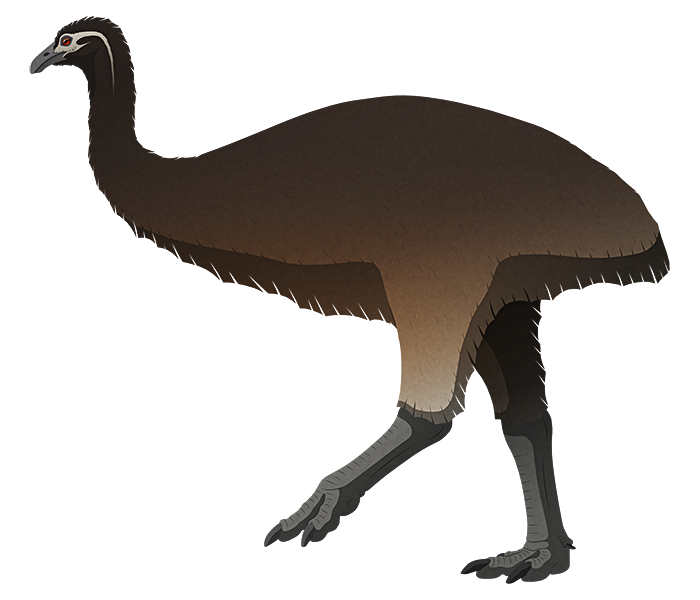
The South Island giant moa (Dinornis robustus) was the largest of them all, with females standing almost 2m tall at the back (6’6″) and able to reach their heads up to heights of around 3.6m (11’10”). It had a long neck, a relatively tiny head with a curved beak, and large powerful legs — and preserved hair-like body feathers show that it was reddish-brown in color.
It also had some of the most extreme sexual dimorphism seen in any bird species, with the males being significantly smaller than the females at only about 1.2m tall (3’11”). This seems to have been the result of scaling-up smaller differences in body size from their ancestors.
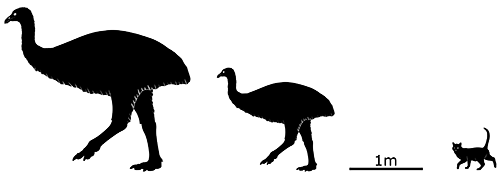
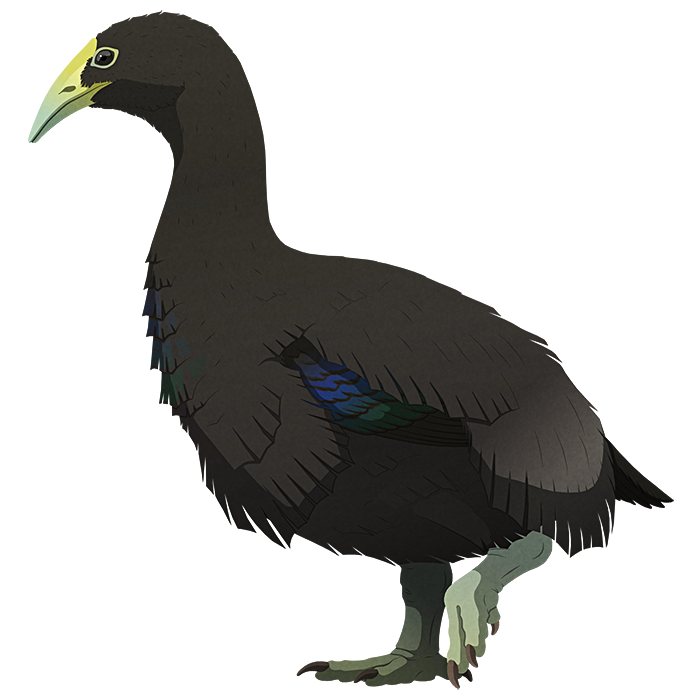
The adzebills were another odd group of big flightless birds whose ancestors also date back to sometime before the St Bathans deposits. They had large downward-curving beaks, short strong legs, and highly reduced wings that were smaller proportionally than those of the dodo.
They were less common than the moa, found only the drier forested parts of the lowlands, and based on isotope analysis of their bones they seem to have been predators hunting invertebrates, reptiles, and smaller birds.
When their remains were first discovered they were even thought to be a type of moa, but later studies (including recovered ancient DNA) have shown they were actually gruiformes, with their closest living relatives being either the South American trumpeters or the African flufftails.
The South Island adzebill (Aptornis defossor) was the slightly larger of the two species known from the Holocene, reaching sizes of about 0.8-1m tall (2’8″-3’3″).
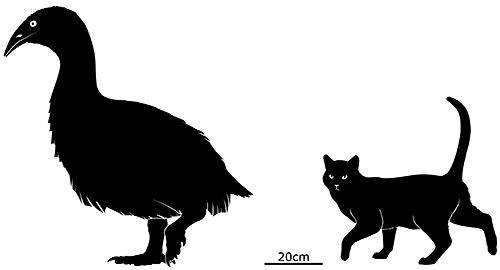
The ancestors of the Māori people arrived in New Zealand around the year 1300, and sadly within about a century a combination of human hunting pressure and predation by introduced mammals sent both the moa and adzebills into total extinction.

